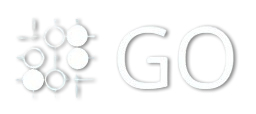
Questions And Answers in GoLang
Here are some common questions and answers related to GoLang that might help you understand the language better.
1. What is GoLang?
Answer: GoLang, commonly referred to as Go, is an open-source programming language created by Google. It is statically typed, compiled, and designed to be simple, efficient, and highly performant, especially for concurrent programming and scalable applications.
2. What are the main features of GoLang?
Answer:
- Simplicity: The syntax is simple, and it avoids excessive features that can make code complicated.
- Concurrency: Built-in support for goroutines and channels for handling concurrent tasks efficiently.
- Static Typing: Go is statically typed, meaning types are checked at compile-time.
- Memory Management: Go has garbage collection for automatic memory management.
- Compilation Speed: Go is designed to compile quickly, even for large codebases.
- Rich Standard Library: Go includes a comprehensive library for various functionalities like HTTP servers, file I/O, and networking.
3. What are Goroutines in Go?
Answer:Goroutines are lightweight threads of execution. Go allows you to run functions concurrently with goroutines. They are very cheap in terms of memory, and you can easily spawn thousands of goroutines in your program to handle tasks concurrently.
Example:
7. What is a defer statement in Go?
Answer:The defer statement in Go schedules a function call to be executed after the surrounding function returns. It is commonly used for cleaning up resources like closing files or database connections.
Example:
file, err := os.Open(fileName) var numbers = []int{1, 2, 3, 4, 5}
fmt.Println(numbers[1:4]) // Output: [2 3 4]
9. What is the difference between arrays and slices in Go?
Answer:
- Arrays: Fixed in size, and their size is part of the type. Arrays are rarely used directly in Go.
- Slices: Dynamic and more flexible. A slice is a reference to an array, and its size can grow and shrink.
Example:
var slice = arr[1:4] // Slice with dynamic length
10. How do you define a function in Go?
Answer:A function is defined using the func keyword, followed by the function name, parameters, and return type.
Example:
func add(a, b int) type Shape interface {
Area() float64}type Circle struct { radius float64}func (c Circle) Area() import "fmt"
Custom packages can be created in your project by placing Go files in a folder and declaring them with the package keyword at the beginning of the file.
14. How do you handle concurrency in Go?
Answer:Go handles concurrency using goroutines and channels.
- Goroutines are lightweight threads that run functions concurrently.
- Channels allow goroutines to communicate with each other safely.
Example:
fmt.Println(import "testing"func TestAdd(t *testing.T) { result := add(2, 3) if result != 5 { t.Errorf("Expected 5, got %d", result) }}
Run tests with:
16. What is the purpose of go fmt?
Answer:go fmt is a tool that automatically formats Go source code to follow the Go community's standard coding style. It ensures consistent code formatting across projects and developers.
To format a Go file:
These are just some of the frequently asked questions in Go programming. Go is a powerful language for modern software development, especially when it comes to system-level, networking, and concurrent applications.
